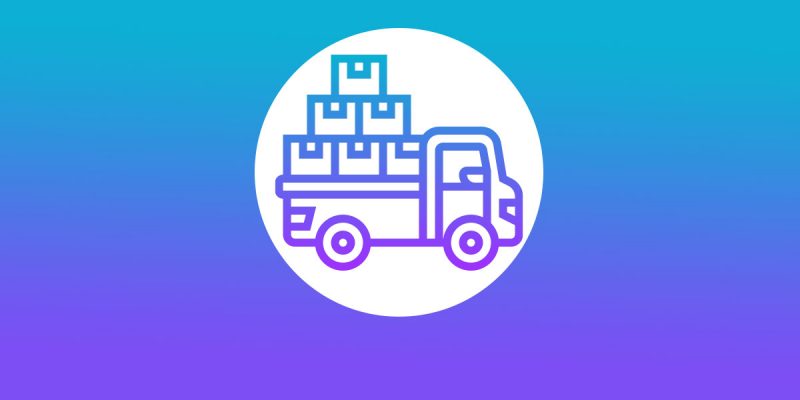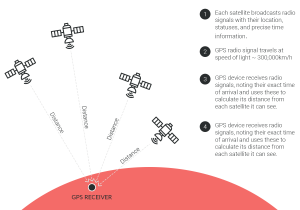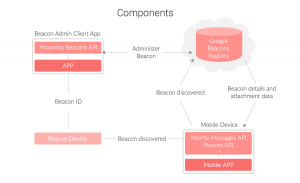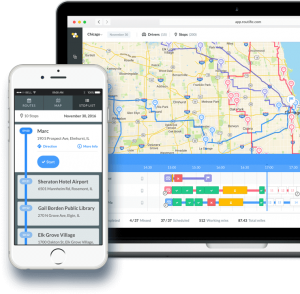
By admin / June 16, 2020
FEATURES THAT REDUCE TRANSPORT MANAGEMENT SYSTEM COSTS
The benefits of custom logistics software
To use existing logistics software solutions is not always a good idea.
Check out the advantages of developing a custom-build freight tracking platform.
- Simple UI/UX. While products available on the market offer different features, most of them have drawbacks. Poor design, lengthy onboarding, and sophisticated dashboards are some of the disadvantages of such solutions. At the same time, you can develop a simple and understandable panel with essential benchmarks.
- Ultimate customization. Many TMS providers offer standard functionality and charge extra fees for customization. Thus, you need to pay for electronic invoicing, automated duty status updates, and so on. But when you build your own system, you receive the ultimate control over the project’s functionality, thus, creating a TMS that meets your workload demands.
- Smooth integration
- with the existing environment. Not all TMS vendors offer integration with your current working environment, such as WMS, ERP, or invoicing software. However, even platforms with such integration do not promise to work correctly with your software and could lose valuable data. The development of a custom TMP ensures a risk-free integration with your current software.
In a nutshell, only custom logistics software will match your unique business needs. Now, let’s dig deeper into custom TMS development technologies.
Essential features for TMS
At first glance, custom transportation logistics software development is a lot of work to do. Some transport management software functionality, such as AI algorithms for route optimization, could cost you a fortune if developed from scratch. Fortunately, you can use existing functions and tools with APIs (application programming interface).
Now, let’s take a look at essential features for your TMS and APIs for such a project.
Real-time vehicle tracking
Location tracking software solves several problems at once. You can check the truck’s location to ensure whether the driver will be on time at the point of destination.
In the case of breakdowns, you can see the location and guide the driver to the nearest service center. Besides this, you can send another vehicle to this location to take the freight and deliver it with the least downtime.
Online vehicle tracking can also record the drivers’ hours of service. So, you can achieve compliance with FMCSA (The Federal Motor Carrier Safety Administration).
To make your custom TMS track vehicles in real-time, consider the following technologies.
- GPS
GPS or Global Positioning System tracks the location of your drivers through a GSM SIM based data plan or Wi-Fi. This technology leverages the transmitter inside the mobile or navigation device. Then, transmitters send the driver’s location to several satellites and update the site in the central database.

We can integrate this function into your platform using Google’s Geolocation API, as we did for the NUWBII project, an app like Yelp.
- BLE Beacons and geofencing
BLE Beacons use low-energy data transmission protocol to store and send condition data. These devices show when a user has entered or exited a given area or geofence. In this way, you can trace your vehicles and check deliveries. Geofencing can also be used for security purposes to prevent unauthorized vehicle movement.

Proximity Beacon API, a part of the BLE beacon platform by Google, can empower your TMS platform with geofencing.
- IoT
The Federal Motor Carrier Safety Administration (FMCSA) requires all commercial motor vehicles (CMV) to include an Electronic Logging Device (ELD).
ELD’s primary purpose is to track drivers’ working hours and prevent them from being on the road without rest. In this way, FMCSA wants to reduce dangerous road situations and car accidents.
Electronic Logging Devices, plugged into a vehicle’s onboard diagnostics (OBD) port, track when the vehicle’s engine is on. But you can receive even more information from every truck by adding IoT sensors.
Such devices can monitor fuel consumption, temperature, load weight, and so on. Moreover, IoT devices can analyze the habits and behavior of your drivers. Thus, you can prevent them from speeding, idling, harsh braking, and other risky driving behavior.
IoT devices collect the information from trucks and send them via secured protocol over mobile networks to a cloud database. Data appears in TMS’s dashboard so that fleet managers can make real-time decisions like re-routing, or accident response.
To integrate IoT, we recommend:
- Firestore for sending data from devices to the platform
- Cloud IoT Core API by Google for transmitting data from the platform to a device
Route optimization algorithm
Route planning and optimization reduces delivery time, saves the delivery time, and fuel consumption.
Route planning tools have machine learning algorithms to predict traffic conditions based on historical or real-time data.
Then, the software suggests the best options for route optimization on the map.
Now, you have two options to choose from:
- Building a route optimization algorithm from scratch despite costly and time-consuming development
- Integrating an already developed road optimization system, tested by trusted algorithm providers
If you choose the second option, you can select among:
Adiona FlexOps
FlexOps by Adiona Technology is an optimization toolkit. Its algorithm leverages Continuous Machine Learning principles. This means that FlexOps injects new knowledge without forgetting previous without deleting previous data.
To suggest the most optimized route, FlexOps implements several types of data analytics. If you need to optimize the route workforce in advance, you can rely on historical data. For on-demand predictions, the algorithm analyses weather, traffic, and other dynamic data.
The algorithm can also optimize routes leveraging a combination of historical and real-time data.

FlexOps has several tiers:
- Free – up to 500 monthly API hits
- Light – up to 2000 monthly API hits/ $300
- SME – up to 10,000 monthly API hits / $1,200
- Enterprise – from >10,000 monthly API hits / calculated by request
GraphHopper Directions
The GraphHopper web app is a strategic tool for logistic companies from the German region. This tool can help you to reduce the number of employed drivers, use all drivers to ensure all drivers are working efficiently or to deliver more orders in less time.
Its API includes libraries for JavaScript client, C#, Ruby, PHP, and Python. It means you can integrate GraphHopper into any web or mobile applications. Besides this, GraphHopper supports offline access.
GraphHopper Directions subscription fee starts at $59.00 per month.

Routific engine
This platform is a perfect solution for small and medium logistics businesses.
The algorithm optimizes routes based on real-world factors, including:
- Time windows
- Vehicle capacities
- Delivery types
- Priority stops
- Driver speeds
And more.
The software also allows changing routes on the go from the mobile app with a simple user interface.
You can integrate the Routific engine’s API into web-based, iOS, or Android applications.
Before paying subscription fees for this tool, you have a 7-day trial period. After this, you pay fixed monthly payments from $150 to $1,500, based on the number of your monthly visits.

Fuel price map
On long-haul journeys or inter-city deliveries, truck drivers may need to re-fuel before reaching their destination or returning to base. In order to avoid paying excess fuel costs, which need to be passed on to customers, you can integrate software that crowdsources local fuel prices.
GasBuddy
This application searches and compares fuel prices in the US, Canada, and Australia. But where does the app take all those prices? GasBuddy motivates users to submit 2-3 million data points on fuel prices in exchange for points and gift cards. Thanks to such an approach, drivers can choose the fuel station with the lowest prices.
To empower your transportation logistics software with the same features, you do not need to develop it from scratch since GasBuddy has a free API. In this way, you save time and effort on building your own fuel stations database.

Now, let’s dig deeper into the transportation software development process.
Steps to develop an on-demand transportation management system
We want to prepare you for the first meeting with your developers so you can start your project successfully.
Step 1. Shaping the Project Vision
Project Vision is the goal of your project. It should answer why this software should be developed and describe which problems the project solves.
Here is an example of a Project Vision Statement from SmartSheet:
“Introduce a document management system that is flexible enough to be synchronized with other existing systems in the business [company name].’
With such a statement, all stakeholders will have clear expectations for the project and its results. Moreover, a defined project vision is also key to being on the same page with your development team. Thus, before asking about the cost of a transportation management system, take some time and write a clear project vision.
Step 2. Getting a quote from the development team
When quoting the development team and asking about transportation management system software cost, try to give as many details about your project as possible. Also, consider that your transportation management platform will consist of three essential components:
- A mobile or tablet app for drivers
- A web-based transportation management system for dispatchers
- Admin dashboard<
/ul>
All of the essential features we discussed earlier – are just the tip of the iceberg. Every platform’s component requires its feature list. Thus, to receive the most precise project cost estimate, describe as many features per solution as you can think of.
Step 3. Launching the Discovery phase
A freight tracking platform is a comprehensive software with three types of users and resource-consuming features. These features may impact on the project’s performance and increase downtime. That is why microservices architecture will work the best for such a platform.
To clarify similar project requirements, we start every project from the Discovery phase. During this phase, we analyze business goals, required features, and most relevant technologies.
Then, we write project documentation for the cargo tracking system with project system architecture, detailed features descriptions, and user stories. In this way, we ensure that the project meets both your expectations and requirements for modern software.
Step 4. Building an MVP
An MVP or Minimum Viable Product is something between a project’s prototype and the final project version. MVP includes only the project’s main functionality and basic design. We release the project’s MVP to the production environment and analyze how the system addresses the business’ challenges. Such an approach helps us to receive timely feedback from clients and polish the project on the go.
Custom TMS development: Final thought
Custom logistics software has many benefits over out-of-the-box solutions. With logistics software development, you can reduce the costs of a custom TMS thanks to ready-made functionality with API integration. At the same time, you receive an on-demand transportation management system, tailored to your business needs.